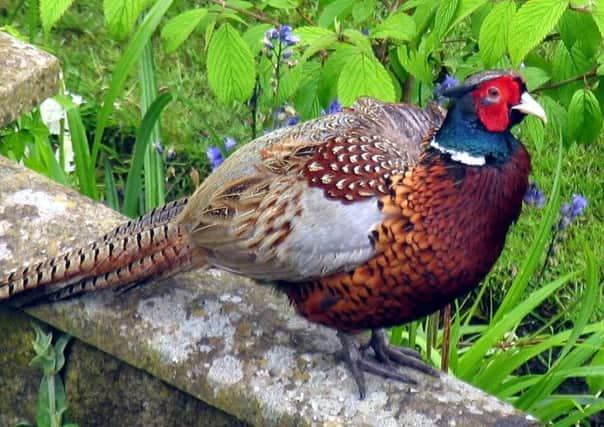Country & Coast: Bird’s splendour exists beyond inbuilt prejudice


There were so many of them that I felt compelled to do a count, as I’ve often done with flocks of ducks, geese, curlews and lapwings, but after half a mile I gave up. The tally had reached in excess of 600 and it was pretty clear that many more birds lay ahead of me.
If they had been redwings or fieldfares I would have revelled in the sight of these beautiful thrushes from Scandinavia, newly arrived to spend the winter here and hoovering berries off the hedges. But the birds which so inundated this part of Yorkshire are rarely accorded that kind of attention and enthusiasm, either by me or most other birdwatchers. They were pheasants.
Advertisement
Hide AdAdvertisement
Hide AdWhen it comes to pheasants we have an inbuilt prejudice. They are not a native British species but have been introduced many times from abroad - initially by the Romans it’s said - and most birds we see scurrying around fields or emitting that distinctive klaxon call in woodland have been specially reared and released as shotgun fodder.
Seeing so many together, however, has changed my negative attitude towards pheasants. With a couple of dozen of them in view through my binoculars it was hard not to be impressed by the beauty of the males. A sudden burst of November sun gave a metallic shine to their dark green heads, made the red wattles around their eyes look like flames, and burnished their long tails like rods of copper.
The surrounding fields were outside Yorkshire’s cereal-growing belt so there had to be another bountiful supply of food for them. And sure enough, I soon found a grain hopper at the edge of a plantation, where unsurprisingly there was the biggest concentration of birds of all.
Yorkshire is said to have more pheasant shoots than any other place in England. Most are in the triangle between Malton, Hull and Whitby, but there are some west of the A1, like this one, which are highly regarded by sportsmen. It can be a very expensive pursuit, and to give a flavour of the charges I have seen one day’s shoot advertised for £12,000, probably working out at a grand each for a dozen guns. Such shooting estates are part of an industry said to generate over £2 billion every year for the UK economy.
Advertisement
Hide AdAdvertisement
Hide AdThe poults are released in their hundreds, even thousands. Some estates free far more of the colourful cocks than the dowdier females because they provide a more attractive quarry, and it was certainly the case that the majority of birds I encountered along that bridleway were males.
Pheasants can still be found away from shooting estates, of course. They happily thrive in the English countryside - without the need for gamekeepers protecting their interests - where we can enjoy looking at them through binoculars rather than down the barrels of guns.